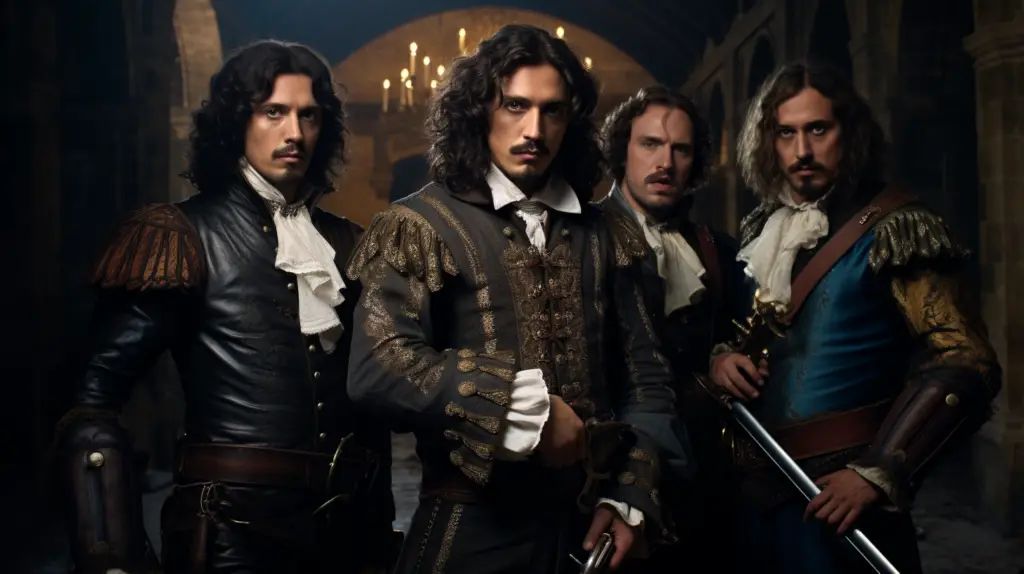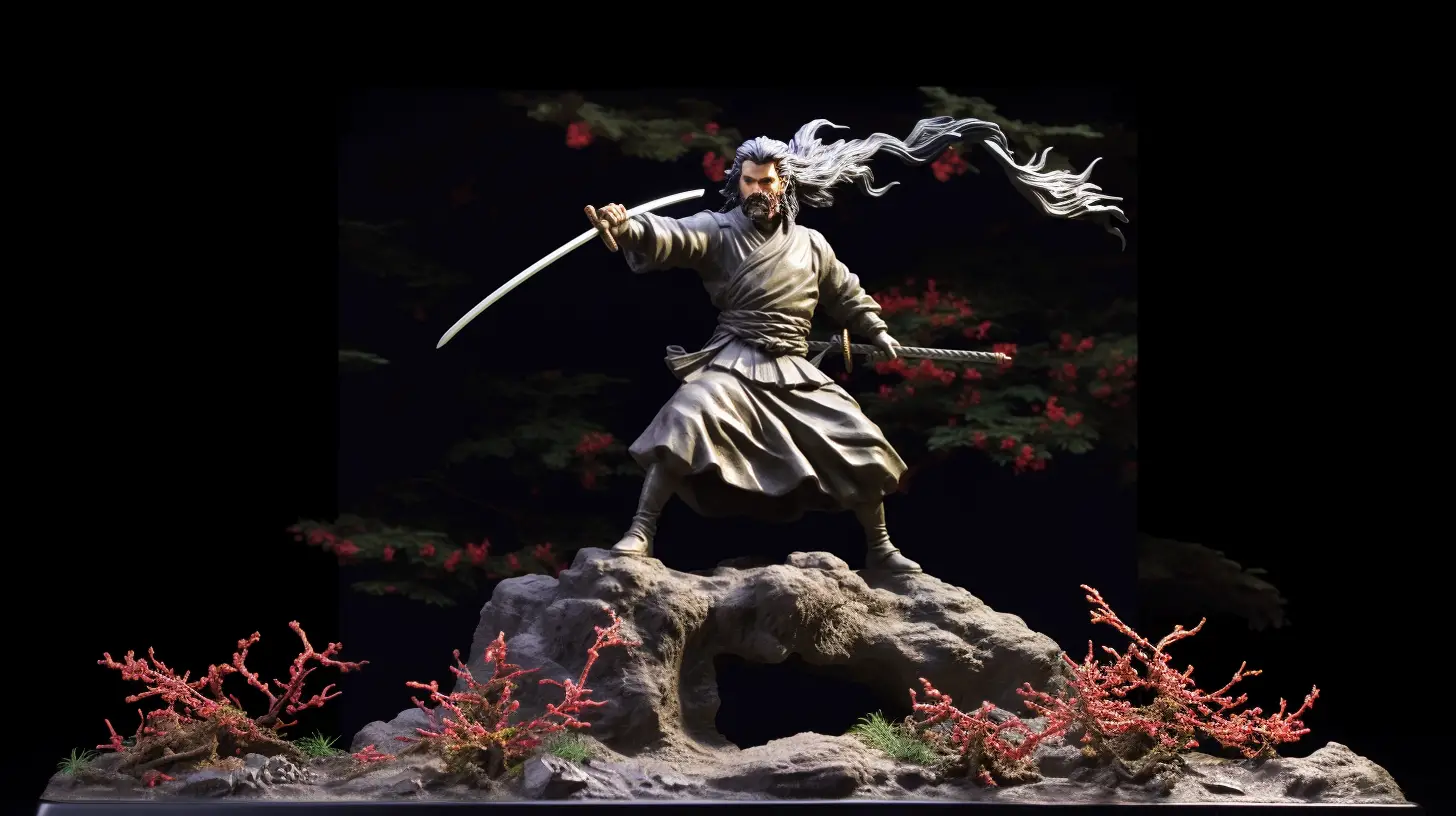Few stories in Western literature have captured the collective imagination quite like Alexandre Dumas’s “The Three Musketeers.” It is a tale of friendship, honor, and daring adventures set in 17th-century France, featuring a band of inseparable friends living by the famous motto “all for one and one for all.” With its rich history and numerous adaptations, including movies, TV series, and even a cartoon, there are many layers and fascinating facts behind the tale of d’Artagnan and his three comrades. The 2023 action/adventure film “The Three Musketeers: D’Artagnan” was well received by the public and film critics.
In this article, we delve into 25 intriguing aspects of the book “The Three Musketeers” and its cinematic renditions.
1. Alexandre Dumas wrote “The Three Musketeers” in collaboration with Auguste Maquet, who often provided the research and plot outlines while Dumas added color and character.
2. The book was initially published as a serial in a newspaper called “Le Siècle” from March to July in 1844.
3. Dumas based his musketeers – Athos, Porthos, and Aramis – on real historical figures. Their real-life counterparts served Louis XIII, just as they do in the novel.
4. The adventurous d’Artagnan was also a real person. Charles de Batz-Castelmore d’Artagnan served as a captain of the Musketeers under Louis XIV.
5. The character of Milady de Winter was inspired by a notorious 17th-century English countess, Lucy Walter, who was involved in political conspiracies and scandals.
6. “The Three Musketeers” is just the first part of a trilogy. It’s followed by “Twenty Years After” and “The Vicomte of Bragelonne: Ten Years Later,” which includes the famous story of “The Man in the Iron Mask.”
7. The book was not instantly popular in France but gained popularity when it was translated into English in 1846.
8. The first film adaptation of “The Three Musketeers” was a silent film in 1903. Since then, it has been adapted into movies and TV series over 30 times.
9. The 1948 MGM film adaptation starring Gene Kelly as d’Artagnan is considered a classic, despite taking many liberties with the source material.
10. The 1973 version of “The Three Musketeers,” directed by Richard Lester, was unique in that it was filmed simultaneously with its sequel, “The Four Musketeers.” Both films boast an all-star cast including Oliver Reed, Richard Chamberlain, and Michael York.
READ MORE: 25 Interesting Facts About Michelle Yeoh’s Life and Work
11. Richard Lester’s adaptation also broke the tradition by presenting a more comedic and light-hearted interpretation of the novel.
12. Athos, Porthos, and Aramis have been played by numerous notable actors, including Charlton Heston, Kiefer Sutherland, Jeremy Irons, and Ray Stevenson.
13. The 1993 Disney adaptation added a romantic subplot between d’Artagnan and Constance Bonacieux, played by Chris O’Donnell and Gabrielle Anwar.
14. The character of Milady de Winter has been portrayed by a diverse group of actresses, including Lana Turner, Faye Dunaway, and Milla Jovovich.
15. The most recent adaptation of “The Three Musketeers” in 2011 was noted for its use of steampunk aesthetics, a considerable departure from previous versions.
16. The 2011 version also differs by focusing significantly on the character of Milady de Winter, giving her a larger role than in the original book.
17. Some adaptations, like the 2001 made-for-TV movie, have taken significant creative liberties, placing the Musketeers in a contemporary setting.
18. The legendary sword fights in “The Three Musketeers” have been choreographed by some of the cinema’s most renowned fight coordinators, including William Hobbs and Bob Anderson.
19. Despite its French origins, “The Three Musketeers” has been adapted into numerous international productions, including Russian, Japanese, and Korean versions.
20. A popular animated series in the 1980s, “Dogtanian and the Three Muskehounds,” is a creative take on the novel, transforming the human characters into anthropomorphic dogs.
READ MORE: Miyamoto Musashi, the Samurai: The Quintessential Warrior
21. The French phrase “tous pour un, un pour tous” (“all for one, one for all”) has become one of the most recognized mottos in literature, thanks to “The Three Musketeers.”
22. In several adaptations, the Musketeers’ arch-nemesis Cardinal Richelieu is portrayed more as an outright villain than the complex character Dumas wrote.
23. Dumas’s narrative style, emphasizing dialogue and action, has influenced how swashbuckling adventures have been written and filmed for over a century.
24. “The Three Musketeers” has not only been adapted into film but also into various other forms like ballet, operas, video games, and graphic novels.
25. Despite the many adaptations and the passing of nearly two centuries, the core themes of friendship, loyalty, and honor in “The Three Musketeers” remain resonant and have ensured its enduring popularity.
READ MORE: 25 Interesting Facts about World Scout Jamboree
“The Three Musketeers,” with its vivid characters and riveting storyline, remains a beloved piece of literary and cinematic history. Its innumerable adaptations have transformed the work into a versatile cultural icon, appreciated by audiences worldwide. As the Musketeers’ legacy continues, one thing is certain: their adventurous spirit and camaraderie continue to captivate and inspire.



